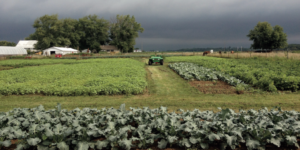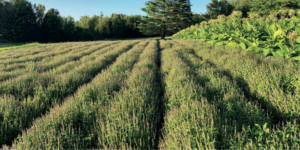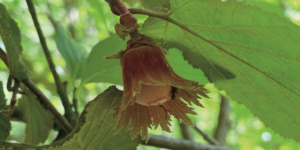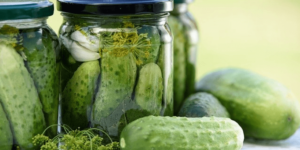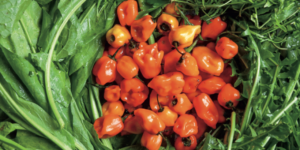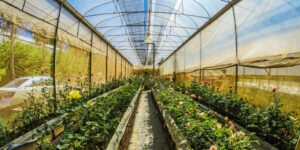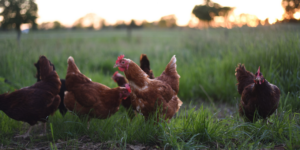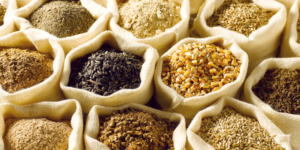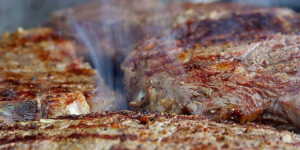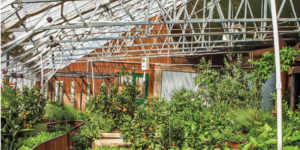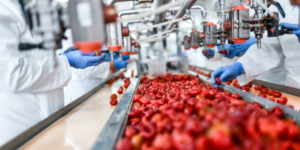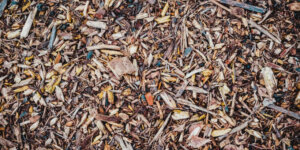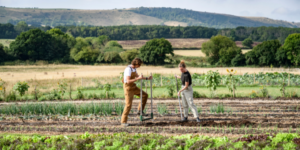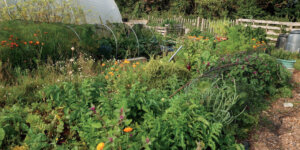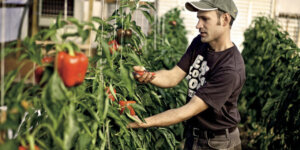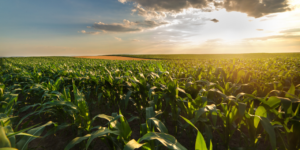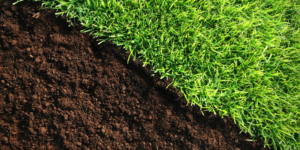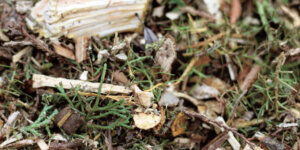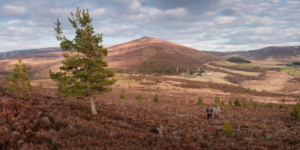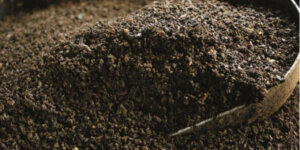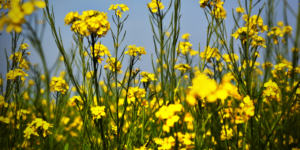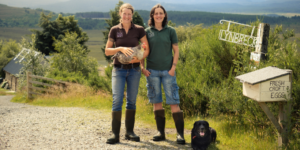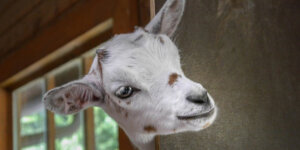Chelsea Green Blog
Farming & Homesteading
5 Steps to Achieve A Lean Vegetable Farm
Looking to create a lean vegetable farm? The lean system, designed to cut out waste and increase profits, allows you to operate a successful and healthy farm with a fraction of the work it usually takes. Here are five simple steps to help you get started! Unless otherwise noted, all photographs copyright © 2017 by Ben…
Read MoreA Guide to Harvesting Hazelnuts
Today, hazelnuts are all the rage. These small nuts, known for their one-of-a-kind flavor, are both delicious AND hearty enough to be grown and harvested in almost any weather conditions. So what are you waiting for? It’s time to start harvesting hazelnuts! The following is an excerpt from Cold-Hardy Fruits and Nuts by Scott Serrano and Allyson…
Read MoreBoreray Sheep: A “Woolly” Remarkable Flock
“Ewe” won’t believe how much Boreray sheep have to offer! This breed provides much more than just a cute face and a full coat of wool. When raised in an ideal environment, Boreray sheep can have a huge positive impact on your farmland. The following is an excerpt from The Lost Flock by Jane Cooper.…
Read More8 Steps to Fermented Hot Sauce With Wild Greens
Hot sauce fans, this one’s for you! This easy recipe for fermented hot sauce with wild greens is sure to add an extra punch of flavor to your favorite meal. The following is an excerpt from The New Wildcrafted Cuisine, by Pascal Baudar. It has been adapted for the web. RECIPE: Fermented Hot Sauce With…
Read MoreNot Level? No Problem. How to Build a Greenhouse on a Slope
Is your yard uneven or sloped, but you want to build a greenhouse? It may not seem like the “perfect spot,” but building a greenhouse on a slope actually comes with a couple of benefits that you won’t get from making one a level site. The following is an excerpt is from The Bio-Integrated Farm by…
Read MoreA Game Of Chicken: The Demand for Real Meat
Meat production can be a tricky business. Everyone wants to consume real chicken and pork, but meeting this demand can be difficult for farmers and food companies. To ensure that we’re eating high-quality chicken and poultry, we must even out the demand for real meat. The following is an excerpt from Saying NO to a Farm-Free Future…
Read MoreFrom Field to Storage: Grain Storage Container Options
Wondering where to put all the grains you grew? Storing grains accurately is essential for a successful harvest; and how you store them can make or break the quality of your crops. Check out the following grain storage container options to see which is best for your farm or homestead. The following is an excerpt from The…
Read MoreHow to Cook the Perfect, Tender Grass-Fed Steak
Summertime is here, which means it’s officially grilling season! Whip up a delicious grass-fed steak at your next BBQ to support small-scale farmers, help protect the environment, and give your guests a meal they’re going to be talking about all summer. The following is a collection of recipes from cookbooks by Shannon Hayes, author of…
Read More9 Things to Consider When Building Your Own Greenhouse
Daydreaming of extending your growing season and building your own greenhouse? After considering the following factors and making a few additional preparations, you’ll be all set to grow food for you and your family in your backyard greenhouse for years to come. The following is an excerpt from The Forest Garden Greenhouse by Jerome Osentowski.…
Read MoreThe Cost of Manufactured Food: Land & Energy
It’s no secret that overly manufactured food isn’t good for our health. The production of these foods is also extremely harmful for agriculture and the environment. The end result of manufactured foods lead to the elimination of many small farms. We must change the way we grow and purchase food to stay healthy and keep…
Read MoreSoil Remediation: Restore Your Soil With Woodchip
If you’re in need of some soil remediation, give woodchip a try! One of woodchip’s secret superpowers is its ability to restore soil. From bioremediation to erosion to soil compaction and more, woodchip is here to save the day. The following is an excerpt from The Woodchip Handbook by Ben Raskin. It has been adapted for the web.…
Read MoreA Long-Term Plan: Regenerative Farming
Small farms are being held back. It’s time for a new vision. It’s time for bold new regenerative farming policies that restore both ecosystems and rural communities. We must avoid or eliminate policies that can be exploited by industrial producers at the expense of small or midsize farmers. “As it stands now, it is not…
Read MoreA Nourishing Recipe to Boost Seedling Growth
You don’t need to use chemicals or other unnatural ingredients to give your seedlings a boost. Just use a combination of seaweed, apple cider vinegar, and other nontoxic ingredients create the perfect blend. Each recipe can be modified to complement the soil and climate for the best-producing crops. The following is an excerpt from No-Till Intensive…
Read MoreMulching 101: Why Mulch Matters
Mulch is essential to soil health because it acts as a barrier against water loss and heat, reduces weeds, improves soil structure, and provides a habitat for animals. Once you’ve found the right method for your garden or homestead, mulching is an easy way to boost your soil’s health. Plus, it’s fairly inexpensive if you collect…
Read More10 Types of Farm Waste: Making and Maintaining a Lean Farm
Just like homes, farms require some cleaning and waste removal every now and then. How do you decide what to get rid of and what to keep?When it comes to a lean farm in particular, farm waste is defined as any activity that doesn’t add value. Before throwing something away, it’s important to consider the function of…
Read MoreA Brief History of Agriculture: The Science Behind Farming
What do you think of when you think of the history of agriculture? Plants, vegetables, maybe some livestock? The basis of farming is actually much more complicated and intricate. Agricultural processes have been taking place right under our noses since the beginning of time — and they occur in the most unlikely and unexpected of…
Read MoreThe Soil Of A Nation: How To Save Our Soil
“The soil is the great connector of lives, the source and destination of all.” —Wendell Berry, The Art of the Commonplace Humans, animals, and plants all rely on healthy soil when it comes to the food they eat and the environment they live in. But what happens when soil quality starts deteriorating? And what can…
Read More5 Uses for the Mighty Woodchip
Very often, the best things come in small packages, and the humble woodchip is no exception. We’re all familiar with the use of woodchips in mulch, and while they are an excellent mulching material, woodchips have many other uses. Think mushroom growing material and animal bedding; think plant propagation and soil amendments — the list goes…
Read MoreLearning to Work With Nature: Finding Common Ground
When Sandra Baer and Lynn Cassells founded Lynbreck Croft in Scotland, they had no money, no plan, and no experience in farming. But they did have a goal: to produce wonderful food for themselves and the people around them by learning to work with nature. Through their efforts over the past several years, Sandra and Lynn…
Read MoreVermicast 101: Good for Soil and Plants
Worms aren’t just the squiggly, pink creatures found on the sidewalk after it rains. They are so much more than that. These highly regarded specimens play a vital role in enhancing our soils and revitalizing the health of the plants we need to survive. But how do we get them to work their magic? Through…
Read MoreThe Process of Growing Grain: Dealing With Weeds
Want to grow grains this spring, but weeds keep getting in the way? With the right tools and practices, you can keep weeds from affecting your grains and handle them without hurting the environment. In the passage below, farming expert Jack Lazor explains the characteristics of the weeds that might appear along the way and offers…
Read MoreAn Eggcellent Idea: The Egg Club at Lynbreck Croft
Lynn Cassells and Sandra Baer left their friends, family, and jobs in England to travel north to Scotland to find a bit of land that they could call their own. They had in mind keeping a few chickens, a kitchen garden, and renting out some camping space; instead, they fell in love with Lynbreck Croft—150…
Read MoreGoats Gone Wild: The World’s First Farm Animal
Looking for advice on maintaining a happy herd? These tips will help you care for your goats in ways that will keep them healthy, safe, and productive. The following is an excerpt from Holistic Goat Care by Gianaclis Caldwell. It has been adapted for the web. Understanding Goats Understanding an animal’s complete needs—including mental and…
Read More

